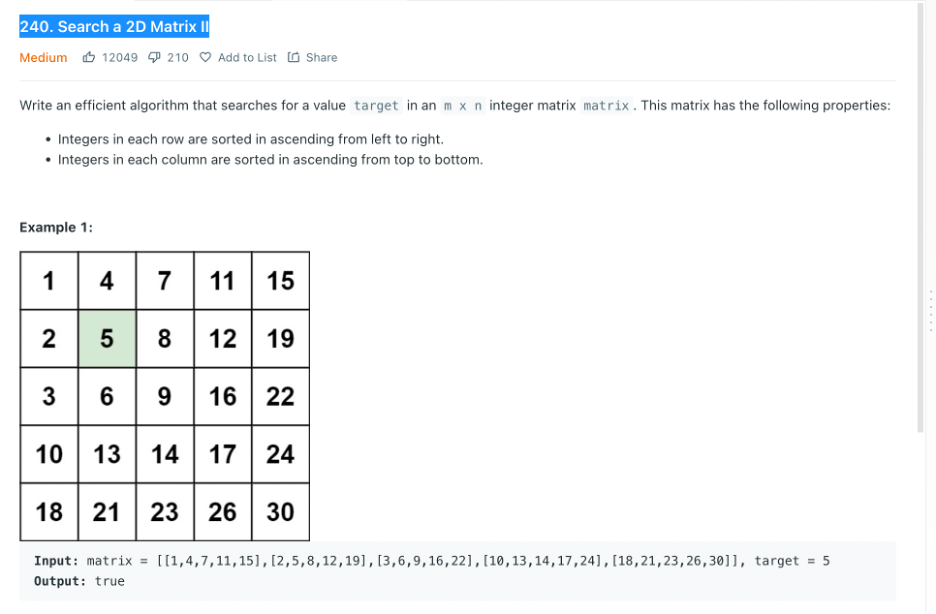Leetcode Explanation
 Siddhesh Dhavale
Siddhesh DhavaleEfficiently Solving Leetcode 240: Search A 2D Matrix II
Introduction:
In this article, I'll walk you through the thought process and solution for Leetcode problem 240: "Search a 2D Matrix II". This problem tests our ability to search in a 2D matrix with sorted rows and columns. I'll explain why direct binary search might fail and how we can optimize the search to achieve O(m + n) time complexity.
Problem Description:
We are given an m x n matrix where:
Each row is sorted in ascending order from left to right.
Each column is sorted in ascending order from top to bottom.
The goal is to determine whether a target integer exists in the matrix.
Problem:

My Findings:
At first, applying a binary search on the matrix might seem intuitive. However, a direct binary search could fail because the target might be in a different row, and due to the sorting in columns, we might incorrectly exclude it.
To address this, we can start searching from the bottom-left corner of the matrix, where we can efficiently eliminate either a row or a column in each step.
Optimized Approach:
Start from the bottom-left corner of the matrix.
If the current element is greater than the target, move up (eliminate a row).
If the current element is less than the target, move right (eliminate a column).
Repeat until the target is found or we move out of bounds.
Pro Tip: Think about where we can start eliminating the rows. Start bottom row elimination and move above row until you find the target and return true, else false.
Code Presentation:
class Solution: def searchMatrix(self, matrix: List[List[int]], target: int) -> bool:
N, M = len(matrix), len(matrix[0])
r, c = N - 1, 0 # Starting at the bottom-left corner
while r >= 0 and c < M:
if matrix[r][c] == target: # Finding the target
return True
elif matrix[r][c] < target: # Target to the right
c += 1 else: # Target must be above
r -= 1
return False # Target not found
Conclusion:
By leveraging the sorted properties of both rows and columns, we can reduce the search space efficiently. This approach runs in O(m + n) time, where m is the number of rows and n is the number of columns, making it highly efficient for large matrices.
Subscribe to my newsletter
Read articles from Siddhesh Dhavale directly inside your inbox. Subscribe to the newsletter, and don't miss out.
Written by

Siddhesh Dhavale
Siddhesh Dhavale
Software Engineering/ Fullstack Developer | Expertise in Java, Python, .Net, SQL, React, Javascript, Typescript, Machine Learning, Talend, Tableau |Graduate Student at Northeastern University | Ex-Software Engineer at Ipserlab California and Birlasoft India